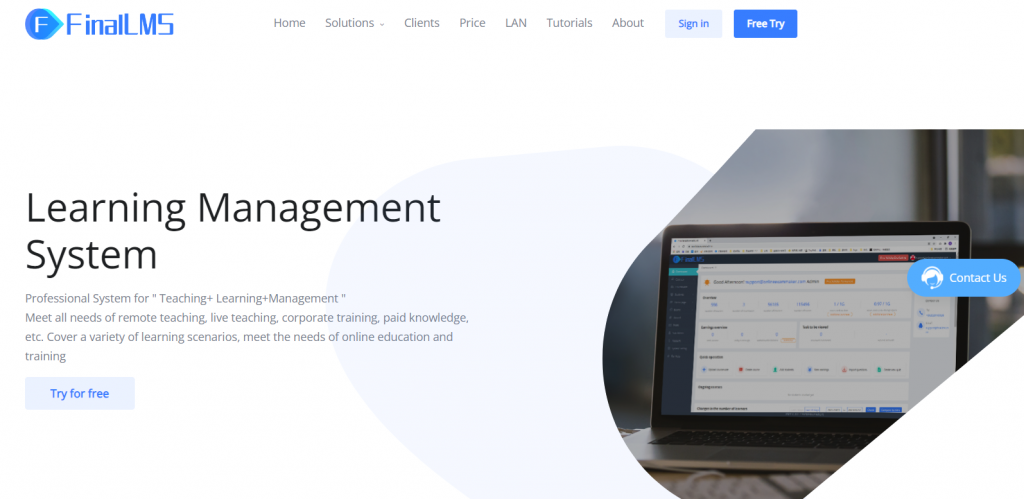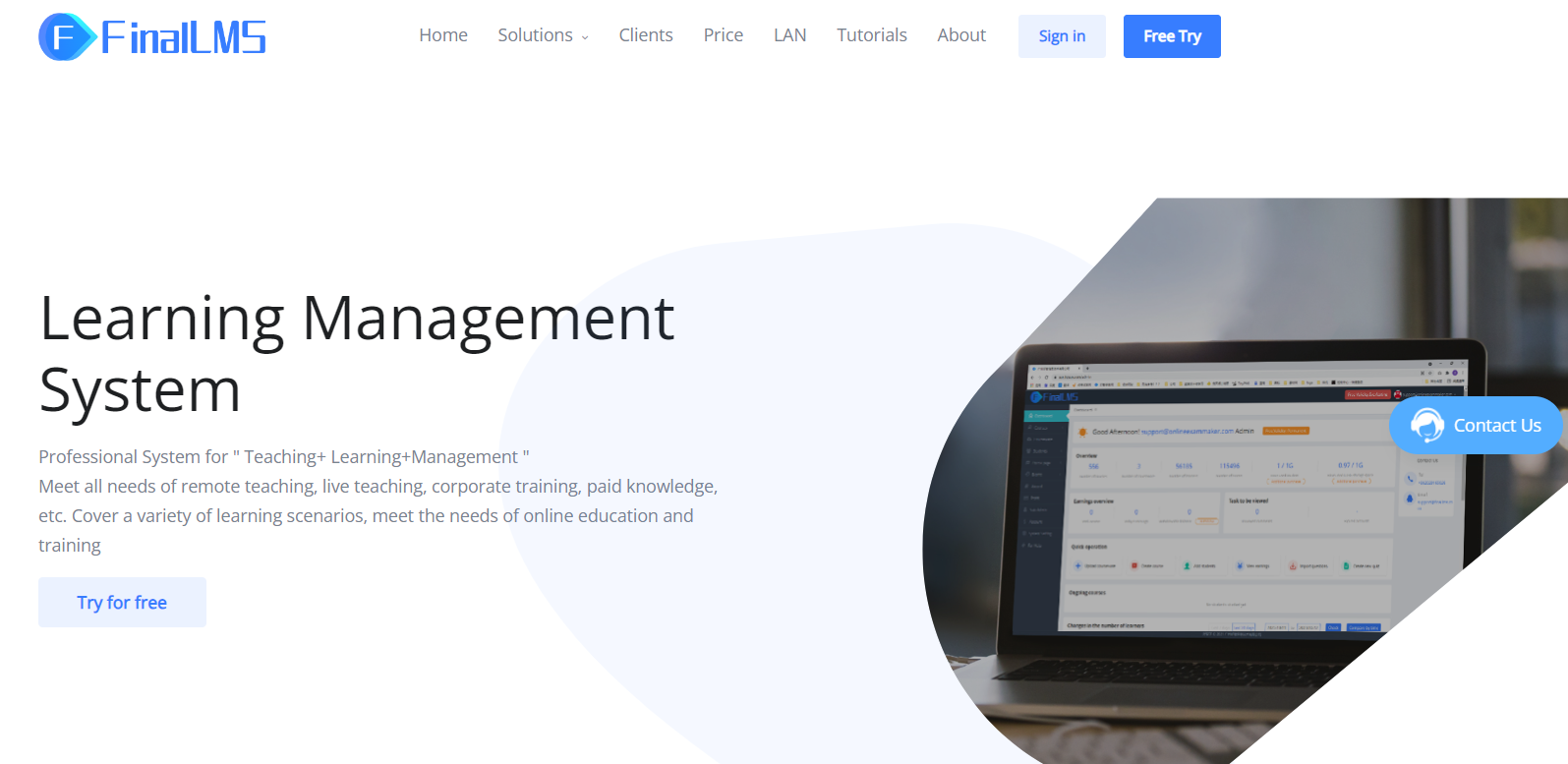Introduction
In today’s fast-paced business world, online training has become an essential tool for organizations to upskill their employees. However, one of the biggest challenges faced by businesses is how to make online training more interesting and engaging for their employees. Boring and monotonous training programs often lead to disengagement and a lack of motivation among learners. This is where Final LMS’s solution comes into play. With its innovative features such as engaging multimedia, personalization, interactive assessments, progress tracking, and badges, Final LMS offers a comprehensive solution to make online training more interesting and effective. In this guide, we will delve into the details of Final LMS’s solution and provide you with a roadmap to implement it successfully in your business.
Understanding the Solution: Final LMS

Before we dive into the practical application of Final LMS’s solution, let’s first understand what it entails. Final LMS is a cutting-edge learning management system that combines advanced technology with instructional design principles to create an engaging and interactive online training experience. It offers a range of features that address the challenges of traditional online training methods and provide a solution that captivates learners and enhances their learning outcomes.
Engaging Multimedia
One of the key aspects of Final LMS’s solution is the integration of engaging multimedia elements into the training content. Gone are the days of text-heavy modules that put learners to sleep. Final LMS allows you to incorporate videos, animations, infographics, and interactive presentations to make the training content visually appealing and captivating. By leveraging the power of multimedia, you can create a dynamic learning experience that holds the attention of your employees and facilitates better knowledge retention.
Personalization
Another crucial feature offered by Final LMS is personalization. Generic training programs often fail to resonate with learners as they do not cater to their individual needs and preferences. Final LMS allows you to customize the training content based on the learners’ roles, skill levels, and learning styles. By tailoring the content to their specific requirements, you can make the training more relevant and engaging for each employee. Personalization also fosters a sense of ownership and empowers learners to take control of their own learning journey.
Interactive Assessments
Traditional assessments can be mundane and fail to measure the true understanding of learners. Final LMS addresses this issue by offering interactive assessments that challenge learners and encourage active participation. These assessments can take the form of quizzes, simulations, case studies, and gamified activities. By incorporating interactive assessments into your online training, you can gauge the learners’ comprehension, identify knowledge gaps, and provide immediate feedback. This not only makes the training more interesting but also enhances the overall learning experience.
Progress Tracking
Keeping track of learners’ progress is crucial to ensure the effectiveness of online training. Final LMS provides robust progress tracking features that allow you to monitor the learners’ performance in real-time. You can track their completion rates, scores, and time spent on each module. This data enables you to identify areas of improvement and provide targeted support to learners who may be struggling. Progress tracking also motivates learners by giving them a sense of accomplishment and progress as they advance through the training program.
Practical Application of Final LMS’s Solution
Now that we have explored the various features of Final LMS’s solution, let’s discuss how you can implement it effectively in your business to make online training more interesting.
Step 1: Assess Your Training Needs
Before implementing Final LMS, it is essential to assess your organization’s training needs. Identify the areas where your current training programs lack engagement and effectiveness. Conduct surveys or interviews with your employees to gather their feedback and understand their pain points. This will help you tailor the implementation of Final LMS’s solution to address the specific challenges faced by your organization.
Step 2: Design Engaging Multimedia Content
Once you have identified the areas of improvement, it’s time to design engaging multimedia content using Final LMS. Incorporate videos, animations, and interactive presentations to make the training visually appealing and interactive. Use storytelling techniques to create a narrative that captivates learners and connects with their real-life experiences. Remember to keep the content concise and focused to maintain learners’ attention.
Step 3: Personalize the Training Experience
Utilize Final LMS’s personalization features to customize the training content for each learner. Tailor the content based on their roles, skill levels, and learning preferences. Provide options for learners to choose their learning paths and explore topics that interest them. This level of personalization will make the training more relevant and engaging, increasing learners’ motivation and participation.
Step 4: Incorporate Interactive Assessments
Integrate interactive assessments into your training modules using Final LMS. Replace traditional multiple-choice questions with scenario-based simulations or gamified quizzes. Encourage learners to apply their knowledge in practical situations and provide immediate feedback to reinforce learning. This interactive approach to assessments will not only make the training more interesting but also enhance learners’ understanding and retention of the content.
Step 5: Track Progress and Provide Feedback
Leverage Final LMS’s progress tracking features to monitor learners’ performance. Keep an eye on completion rates, scores, and time spent on each module. Identify learners who may be struggling and provide timely feedback and support. Celebrate their achievements by awarding badges and rewards for their progress. This continuous feedback loop will motivate learners and create a sense of accomplishment, making the training more enjoyable and fulfilling.
Summary
Making online training more interesting in business is a challenge that many organizations face. However, with Final LMS’s solution, you can overcome this challenge and create a captivating and effective training experience for your employees. By leveraging engaging multimedia, personalization, interactive assessments, progress tracking, and badges, Final LMS offers a comprehensive solution that addresses the shortcomings of traditional online training methods. By following the practical implementation roadmap outlined in this guide, you can successfully implement Final LMS’s solution and make your online training more interesting, engaging, and impactful.
FAQs
Q1: Can Final LMS be integrated with our existing learning management system?
Yes, Final LMS can be seamlessly integrated with most learning management systems. Its flexible architecture allows for easy integration and migration of your existing training content and data.
Q2: How can Final LMS personalize the training content for each learner?
Final LMS offers a range of personalization features such as role-based customization, skill-level assessments, and adaptive learning paths. By leveraging these features, you can tailor the training content to meet the specific needs and preferences of each learner.
Q3: Can Final LMS track the progress of learners across multiple devices?
Absolutely! Final LMS is designed to be device-agnostic, meaning it can track learners’ progress across various devices such as desktops, laptops, tablets, and smartphones. This ensures a seamless learning experience regardless of the device used.
Q4: Can Final LMS be used for compliance training?
Yes, Final LMS is well-suited for compliance training. Its interactive assessments and progress tracking features enable organizations to ensure regulatory compliance while keeping learners engaged and motivated.
